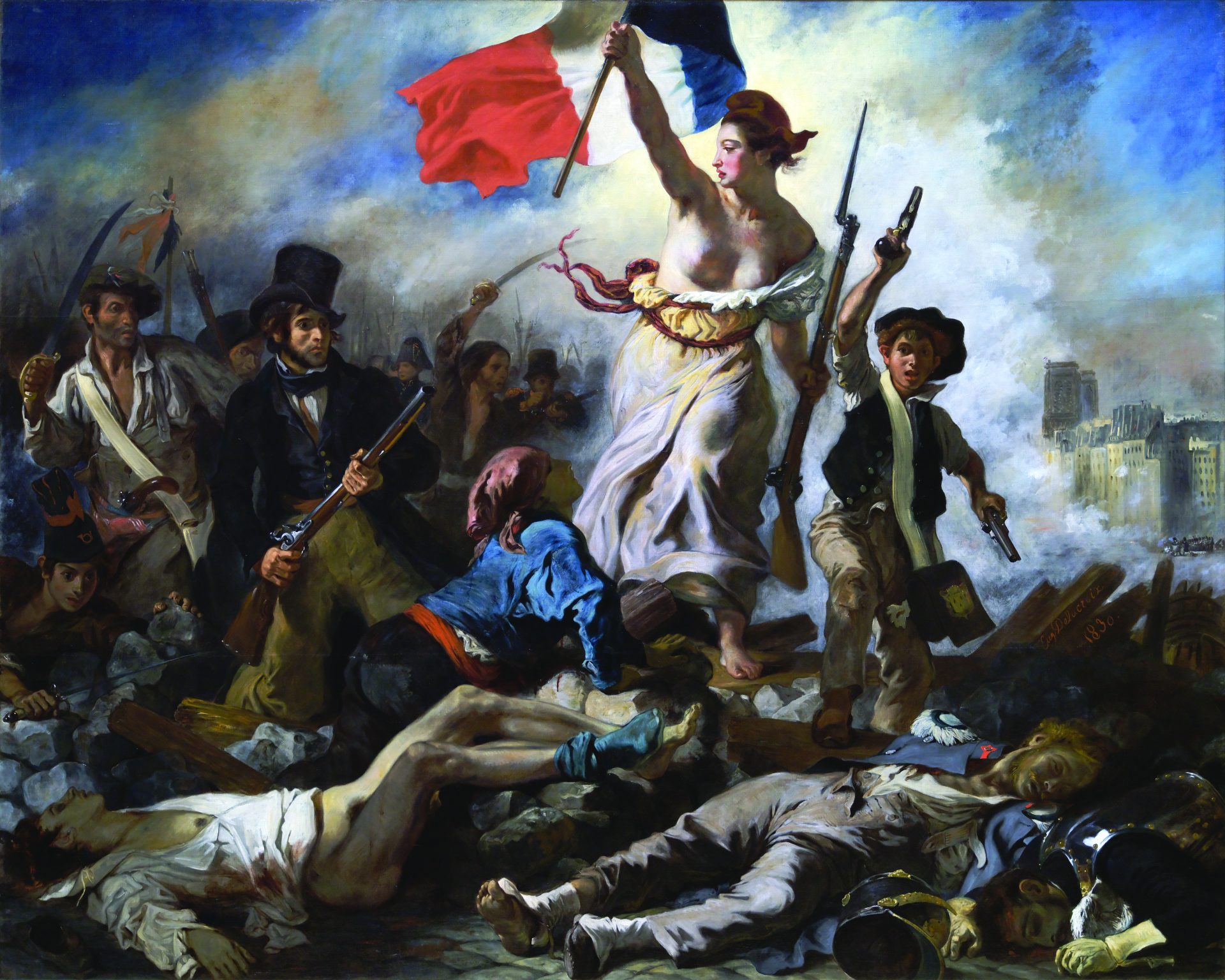
Americans who have lived abroad know that the rest of the world is mildly obsessed with the CIA. I live in Istanbul, and early on I learned that many Turks believe CIA agents can pull off everything from September 11 to the election of Islamists; what’s more, they suspect I might be a spy, too. In this view of the world, some foreign influence is always responsible for something, some outside group is always “fomenting chaos” somewhere, some lethal CIA squad is always making it look like the leftists bombed the rightists by bombing the rightists themselves. At first, to this innocent and trusting American, the Turks who said such things seemed crazy, even stupid.
In fact, I was stupid. I had vastly underestimated the CIA’s productivity. These arrogant Ivy League adrenaline junkies, overthrowing leaders and creating unrest whenever it struck their fancy, had changed the fates of more countries than I knew. (Tim Weiner’s landmark 2007 history of the agency, Legacy of Ashes, was largely responsible for my belated education.) These stories rarely made it into American textbooks, and yet the CIA haunted history everywhere from Guatemala to the Congo, from Chile to Laos. And though it’s impossible to judge who suffered the most due to the CIA’s violent mischief, you could argue that one of the most transformative CIA endeavors in history was the 1953 coup against the prime minister of Iran, Dr. Muhammad Mossadegh.
Christopher de Bellaigue’s new biography of Mossadegh, Patriot of Persia, arrives just in time. As the US and Israel flirt with bombing Iran, it’s bracing to review the recent twists and turns of Iran’s history, in order to grasp why the Iranians distrust the West as they do, and why they likely wouldn’t bear an attack without an epic response.
De Bellaigue, the author of three books on Iran and Turkey, lived in Tehran for a number of years and speaks Farsi fluently. He drew on Persian and Anglo sources for the book, and his tone reflects a deliberate evenhandedness. Even his rendering of the colorful Mossadegh, a man who ruled in his pajamas, somehow feels low-key. In Shah of Shahs, the late Polish journalist Ryszard Kapuściński conjured the broader impact of Mossadegh’s rule from a photograph of Iranians celebrating Mossadegh’s most important act of rebellion against the West:
In those days, to dare the sort of act that Doctor Mossadegh just performed was tantamount to dropping a bomb suddenly and unexpectedly on Washington or London. The psychological effect was the same: shock, fear, anger, outrage. . . . In those years, colonial property was a sacred value, the ultimate taboo. But that day, whose exalted atmosphere the faces in the photograph reflect, the Iranians do not yet know they have committed a crime for which they will have to suffer bitter painful punishment.”
De Bellaigue’s steady, restrained style doesn’t permit such bold interpretive flourishes. But his biography—the first major treatment of Mossadegh’s life to hit the mainstream US book market—is concise, smoothly written, and ultimately absorbing: the kind of portrait that serves as much as an introduction to a country as it does to a man.
That “colonial property” with “sacred value” that Mossadegh messed with was, of course, oil. His struggle to nationalize the Anglo-Persian Oil Company—the British government’s largest single investment—came after years of obsession with liberating Iran from the influence of foreign powers. For a sweet flash of time, the democratically elected Mossadegh was able to unite a country divided by monarchic, Communist, and Islamic forces under the banner of independence. After the Americans and the British ended his rule, the Iranians’ longing for freedom would fester, until it mutated into something far more threatening than “Mussy Duck,” as the ever-contemptuous Winston Churchill liked to call him.
Muhammad Mossadegh was born in 1882. His mother was a descendant of the Qajar dynasty, and his father a former minister of finance. This royal-political lineage imbued the young scholar with a sense of purpose, and his mother nurtured her son’s tendencies toward martyrdom. Mossadegh’s father died when he was eleven, and the serious and “poised” child assumed responsibility for the family. At fifteen, he became a revenue officer for a large swath of Iran and at twenty-one, he married a woman he’d eventually come to love. His innate dutifulness made him devoted to his family for his entire life. (This was decidedly not the case for the fussy last shah; it was his habit to throw away wives when they couldn’t produce heirs.)
When Mossadegh was in his early twenties, a constitutional revolution erupted in Iran. For decades, the country, ruled by the Qajar dynasty, had swerved between the imperial orbits of Russia and Britain. The Qajar crown prince—who was also the brother-in-law of Mossadegh’s mother—allowed the two empires to monopolize Persian industry and incurred debts to their banks, making the country woefully dependent on outsiders. Religious conservatives, merchants, and radicals had jointly demanded the establishment of a Parliament that limited the powers of the monarchy but left the shah in power—Mossadegh never wanted to depose the shah, either—though the revolutionaries would soon part ways. And their division would leave a central question to be resolved, one that resonates today: What kind of Iran should the Iranians create?
Amid all this intellectual and political ferment, Mossadegh’s nationalist vision for Iran began to take shape. He “came down on the side of clerical modernizers when he argued that Islamic laws were historical phenomena and subject to revision as society changed,” de Bellaigue writes. “He also attacked the imposition of European laws and institutions on Iran, arguing that ‘the direct result of imitating Europe will be the spoliation of a country like Iran, for everything should be in proportion with the need.’” Mossadegh wanted to modernize Iran’s legal and political systems without also Westernizing Iran.
When he returned from studying abroad in Europe in 1914, the quest for oil had become the latest iteration of the imperial Great Game. Britain had a new, desperate need for oil—to supply British warships in the short term, and to fuel the empire’s continued existence over the longer term. Because of Iran’s concessions to a British explorer who had discovered oil a decade earlier, the British could establish Anglo-Persian Oil without even asking “the Persians what they thought.” Eventually, the shah agreed to allow the British to control every aspect of the company’s business, with the Iranians taking only 16 percent of the profits, for the next sixty years.
Sandwiched between warring, crumbling empires while suffering its own political turmoil, Iran was completely vulnerable to British rapaciousness. Mossadegh’s mother urged her son to jump into the fray, and in 1917 he was appointed deputy finance minister. The moralizer immediately set about nabbing officials on corruption charges, and later challenging the dictatorial modernizer Reza Shah, and disparaging the British.
“He was the kind of man who would ‘raze Caesarea for the sake of a handkerchief,’” said one observer, but as de Bellaigue explains, “Mossadegh’s desire to be on the side of right chimed with his qualities as a public figure, and his personal prestige would never be higher than when politically he was most wretched.” Even more important, de Bellaigue observes, Mossadegh’s self-punishing rectitude “was connected to the ideal, rooted in the national psyche and in the history of Shia Islam, of virtue and self-sacrifice in leadership.” It’s clear from Patriot of Persia, however, that few politicians adhered to this ancestral duty as much as Mossadegh did, and his zeal sometimes tended toward autocracy. “His understanding of democracy would always be colored by traditional ideas of Muslim leadership,” de Bellaigue writes, “whereby the community chooses a man of outstanding virtue—and follows him wherever he takes them.” Knowing the future, one feels some sympathy for this brand of benevolent demagogue: Mossadegh apprehended with a ruthless clarity the threat that the global competition for oil posed to Iran.
By the time Mossadegh was elected to Parliament in 1943, he had already won widespread respect among the Iranian public for his opposition to Britain and to the shah. His relentless campaign for the nationalization of Anglo-Persian catapulted him to the premiership eight years later: “Let us negotiate with every state that wishes to buy oil, and get to work without delay to liberate the country,” he announced. On the night of his election, his supporters partied all night. As one Iranian journalist wrote in retrospect, “Long live the memory of those glorious days.”
Most of the world cheered on Mossadegh’s chutzpah—especially young nations with still-fresh memories of colonial excesses, such as India, Turkey, and Egypt. The West did not. In Britain, the Daily Mail cried that the government must “do something about Persia before the rot spreads further.” The gloriously condescending editors of Time magazine named Mossadegh Man of the Year in 1951 as “an expression of rage and befuddlement,” writes de Bellaigue; the article parodied the Thousand and One Nights and called Mossadegh an evil nobleman-cum-man-child who throws temper tantrums. Meanwhile, as his negotiations with Britain for shared interest in Anglo-Persian flamed out disastrously, Mossadegh believed that another country would intervene on his behalf. That country was the United States.
That hope was not as outlandish as it now sounds. This was still the gentle time before the United States had fully cultivated its own obsession with oil; back then, the drug of the day was anticommunism. Communists were quite active and influential in Iran during the 1940s and ’50s, and the Americans worried they might lose the country to the Soviets. British diplomats, who knew their country was on the verge of bankruptcy and who were frantic to reclaim another lost jewel, didn’t believe that Iran’s local Communist party posed much of a threat, but found it temptingly easy to manipulate the Americans’ fears. The dying empire convinced the gullible empire to join forces and wreak a special kind of havoc on Tehran.
In retrospect, the CIA’s methods in Iran feel both familiar and shocking. Among other gruesome tactics, American intelligence agents used “alarmist propaganda” to (yes) “foment . . . chaos” and “instill panic that the country was sliding towards a communist takeover.” In August of 1953, they bought off newspapers, employed thugs to pose as Communists, attacked mullahs and mosques, and spread rumors that Mossadegh was a Jew. (Nice one, America.) Egged on by this artificially fomented chaos, the real Communists soon rampaged through the city. A New York Times correspondent was nearly lynched.
At the riot’s climax, a mob hundreds strong attacked Mossadegh’s home, where he’d burrowed himself inside, waiting for death. As de Bellaigue recounts, Mossadegh issued a dramatic pronouncement from his self-imposed internal exile: “If I am murdered, it will be more useful for the country and the people than if I stay alive.” Instead, he was captured by the police and sent to prison. Mossadegh knew the Americans and British had deposed him, but in the United States credit for his fall went to the Iranian army. And in Iran, the shah returned to power. Mossadegh’s “picture on exercise books was pasted over with that of the Shah,” de Bellaigue writes, “but schoolchildren found that by holding the books up to the light they could see Mossadegh’s face looking straight through the sovereign.”
In the wake of the coup, the American ambassador to Iran “recommended to the Shah an ‘undemocratic independent Iran,’ by which he meant an authoritarian regime pledged to the West.” The shah signed up for this Western program for twenty-five years, until he was run out of Iran by another revolutionary who extolled the virtues of independence: the Ayatollah Khomeini.
De Bellaigue, perhaps too hopefully, describes what he believes would have happened in Iran had Mossadegh remained in power. Iran “would have tilted to the West in foreign affairs,” he suggests. It would have also become “a constitutional monarchy in a world of dictatorships, dependencies, and uniformed non-democracies”; developed an “egalitarian” economy, a free press, and an uncorrupt government; and made personal liberty, for the secular and the religious alike, a “lodestone.” Indeed, de Bellaigue writes that Mossadegh’s moment in history resembled the Arab Spring sixty years later: Had Mossadegh continued, he might have inspired other countries to imitate his worthy example. When Britain and America set back Iran they set back the world.
As a result, de Bellaigue adds, “almost overnight, the US had gone from being a force for good to the Shah’s accomplice in injustice and oppression.” In a sense, all the tensions that assail the relations between the United States and Iran today stem from that moment. In All the Shah’s Men (2003), Stephen Kinzer recounts talking with an older Iranian woman about the 1953 coup. “Why did you Americans do that terrible thing?” she cried out. “We always loved America. To us, America was the great country, the perfect country, the country that helped us while other countries were exploiting us. But after that moment, no one in Iran ever trusted the United States again.”
Suzy Hansen is a writer living in Istanbul.






